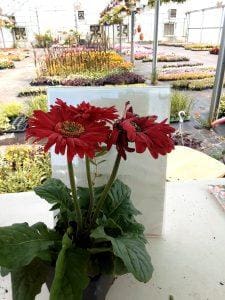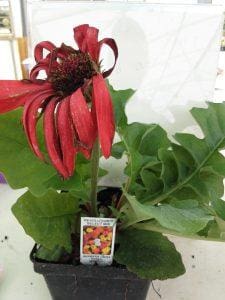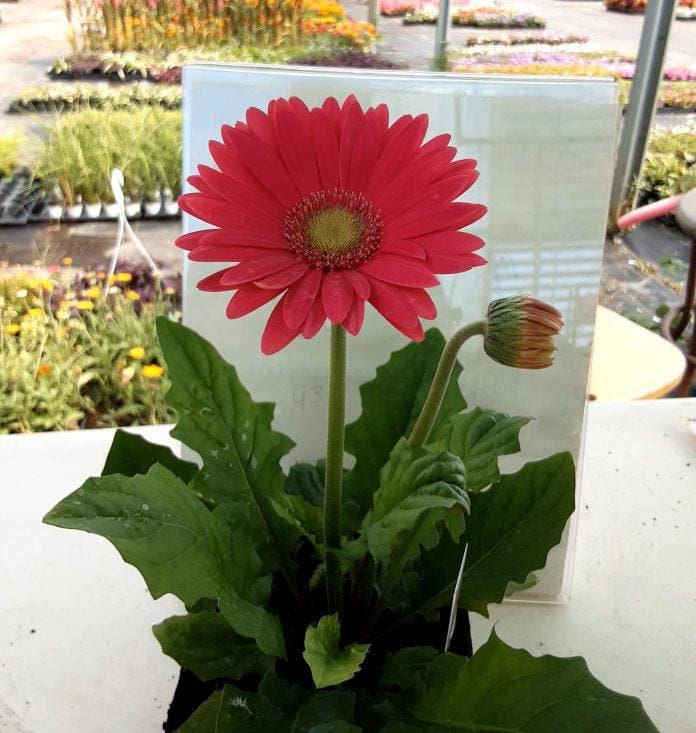GREENVILLE—Do you like to see the many different beautiful flowers that different plants produce? Did you know that you can help keep these plants producing many
more beautiful flowers with just a little tender loving care?
 The main purpose of a plants life is to reproduce and multiply, after a plant is finished flowering, it begins to form seeds which uses a lot of the plants energy and because of this the plants flowering process is depleted or suspended and its attractiveness fades.
The main purpose of a plants life is to reproduce and multiply, after a plant is finished flowering, it begins to form seeds which uses a lot of the plants energy and because of this the plants flowering process is depleted or suspended and its attractiveness fades.
Can enhance the flowering performance of many plants, this process is commonly called “Deadheading” which is a gardening term that defines the process of removing faded or dead flowers from plants.
Removing dead flowers and seed pods is an important task to keep up with in the garden throughout the growing season because it results in healthier plants and continual blooms. When dead blooms are left clinging to flowering plants, they sap the nutrition and strength from the plants and rob them of the energy to produce new and colorful blooms.
The deadheading process redirects the plants energy from seed production to root and vegetative growth with more flowers so that it can try again to produce seed.
Deadheading is performed by pinching or cutting off the flower stems below the spent flowers and just above the first set of leaves. Always check plants carefully to be sure that flower buds are not hiding amid the faded blooms before you shear off the top of the plant.
The frequency of deadheading a particular plant depends on the life span of its blooms. This can range from a day to several weeks, depending on the species. Weather also greatly affects a flower’s longevity, rains and unseasonably hot weather can take their toll on blooms.
Evaluate your garden frequently to determine if there are any deadheading needs. Spending a short time in the garden each day throughout the growing season will make the task of deadheading much easier, It will also allow you to stay in contact with your garden beds. Many gardeners find deadheading enjoyable and relaxing. It can also be meditative and therapeutic as you enjoy the beauty in your garden.

Deadheading is advantageous for a lot of plants but it can also be detrimental for others. Gardeners should evaluate the needs of their plants in order to make a proper determination on how to maintain them.
Many annuals when they are trimmed back or deadheaded will reward you with more beautiful blooms, some of these include the petunia family, marigolds, snapdragons, and dianthus. But there are some like impatiens begonias and vinca that do not need to be deadheaded.
There are a few plants like geraniums that have a joint at the base of the bloom stem where it meets the main stem, it is best to “Snap” the old bloom off at this joint as opposed to cutting or pinching the bloom off. Geranium plants also benefit from the removal of old leaves that are turning yellow and brown, the leaves also have a joint at the main stem and are easily “Snapped Off” to remove them.
Some perennials that benefit from being deadheaded include Achillea (Yarrow), Astilbe (False Spirea), Campanula (Bellflower), Centranthus (Jupiter’s Beard), Coreopsis (Tickseed), Delphinium (Larkspur), Gaillardia (Blanket Flower), Geranium (Cranesbill), Monarda (Bee Balm), Oenothera (Evening Primrose), and Phlox paniculata (Garden Phlox). Taller varieties of Sedum such as Autumn Joy should be cut back to prevent spindly branches and to promote compact growth. Roses benefit greatly from deadheading and will reward you with many more blooms if the plant is properly maintained. It may also add years to the life of most rose plants.
There are some perennials that are great self-seeders, that you should not deadhead. For example, columbine loves to spread and roam its seedlings to places away from the parent plant. An advantage to this is that baby plants can help fill in areas of your garden or allow you to share plants with other gardeners. Some other perennials that should not be deadheaded so that they reseed for the following year are Alcea (Hollyhock), Digitalis (Foxglove), Lobelia (Cardinal Flower), and Myosotis (Forget-me-not).
Some gardeners do not deadhead their plants in the autumn, they feel it is important to keep seed pods on the plants for the wildlife to enjoy during the winter months. Also, some plants have very decorative seed pods and present a beautiful display in the garden during the winter. Birds enjoy perching on Echinacaea (coneflowers) and snacking on the seed heads. Plants like Rudbeckia are great for attracting gold finches with their seeds. This is crucial food for them in the winter.
Nothing is more rewarding than watching your own garden come to life with beautiful blooms and practicing the task of deadheading throughout the season, when it is deemed appropriate. You will be blessed with a another wave of blooms to enjoy, even more for some plants, while other plants will reward you with reseeding to keep your garden thriving from year to year.
God has blessed us with so much beauty all around us, and each season has a beauty that is unique in its own way, we will be blessed and inspired if we will just stop long enough to find and enjoy the beautiful things He has created, Richland Gardens was started by Hollis and Charlotte Flora in early 1960’s. And is currently owned operated by their son Edward Flora and his wife Karen. The greenhouse is located at 6914 US Route 36, Greenville, Ohio. Call 937-548-1577 for more information, you may also check out their Website at www.richlandgardens.net or go to their Facebook Page.






